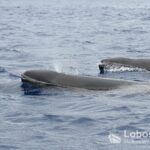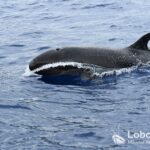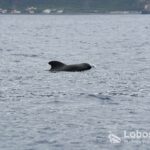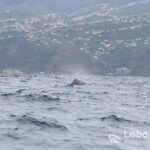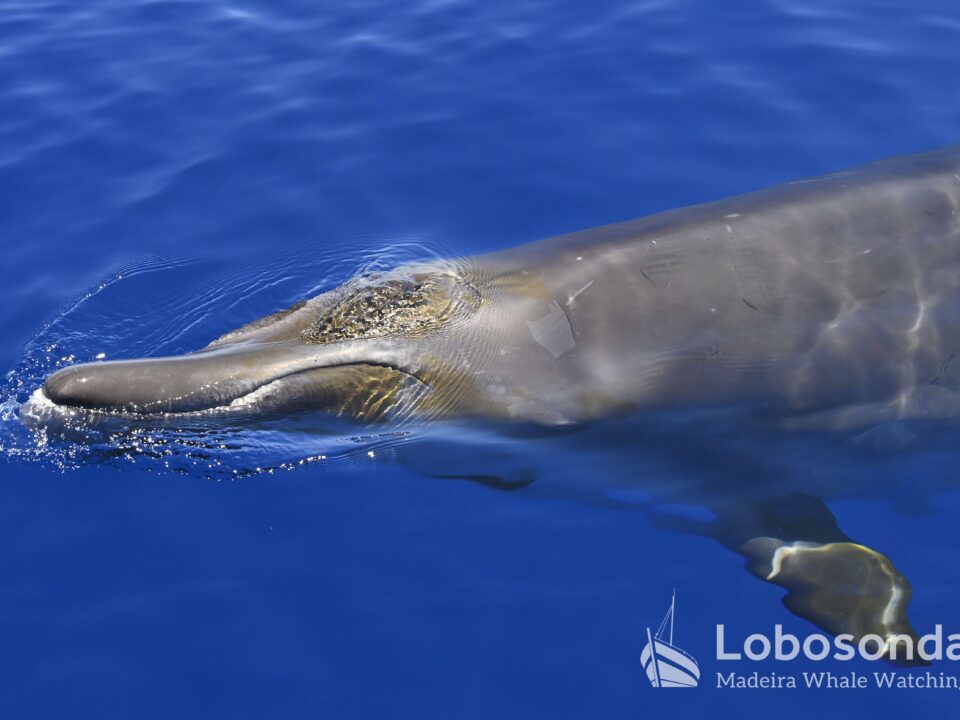
07.11.2024 – A bit of guesswork
November 12, 2024
09.11.2024 – Only Dolphins
November 14, 2024Our morning tour on Stenella was one of the most exciting ones of the whole season – The ocean seemed full of food, thus, plenty of wildlife gathered, it partly felt like rushing from one sighting to the other. We managed two observe four different species during our 2 hour trip! These were Bottlenose dolphins (Tursiops truncatus), Atlantic spotted dolphins (Stenella frontalis), Short-finned pilot whales (Globicephala macrorhynchus) and False killer whales (Pseudorca crassidens). Despite their names, these species are all members of the family of Marine dolphins (Delphinidae). And just as I explain to our guests prior to the trips, we mostly observe dolphins in our waters. Whilst some of our guests seem disappointed after this statement, believe me, there is no reason to be. The dolphin family is an extremely diverse one. Excuse the language, but, because of containing so many diverse species, the family has been referred to as a “taxonomic trash basket’. Some of their members do not even measure 1.5 meters, whilst the largest species measures up to 10 meters (on a side note, there are other “whales” not reaching that size)! Some of them feed near the surface and come up to breathe every minute, whilst others forage at depths of up to 1000 meters for squid and can stay long periods of time underwater. They do not all look like you might imagine nor do they behave like it. Some dolphin species live in very fluid relationships and can be seen alone in one moment only to later gather in groups of hundreds of individuals. Others prefer to stay their whole lives in stable families, looking out for each other and developing their own dialects. But if they are so different, what makes a dolphin a dolphin? Taxonomically, it all comes down to genetic similarity and common ancestors. Morphologically, they have rather streamlined bodies, conical shaped teeth, a prominent beak (although, there are exceptions) and a dorsal fin near the center of their backs (again, exceptions). All dolphins are gregarious, however long- or short-lived the groups might be. Despite not making long distance seasonal migrations, they move dozens or hundreds of miles in search of food, which they find with help of their large foreheads (“melons”) and soundwaves (echolocation).
Another thing they all have in common? They are all amazing to observe in the wild!
by Sarah Kather
Sightings of the day
Ribeira Brava
13:30 Sperm whales
Stenella
09:30 Bottlenose dolphins, Atlantic spotted dolphins, Short finned pilot whales, False killer whales
13:30 Sperm whales



